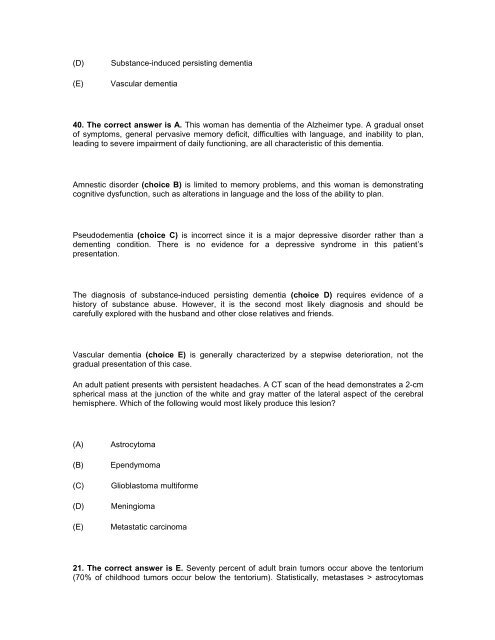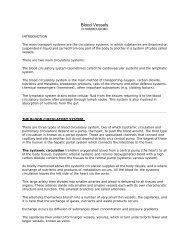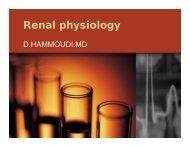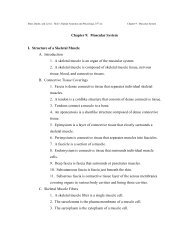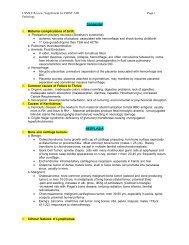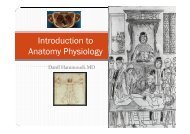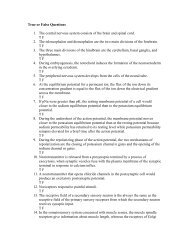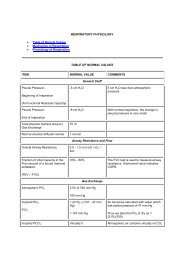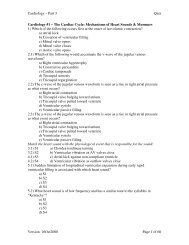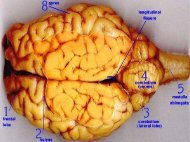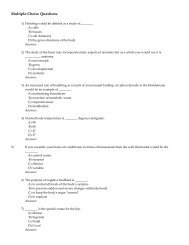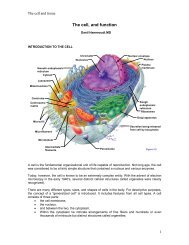L:\usmle review 7 - Sinoe medical homepage.
L:\usmle review 7 - Sinoe medical homepage.
L:\usmle review 7 - Sinoe medical homepage.
You also want an ePaper? Increase the reach of your titles
YUMPU automatically turns print PDFs into web optimized ePapers that Google loves.
(D)<br />
(E)<br />
Substance-induced persisting dementia<br />
Vascular dementia<br />
40. The correct answer is A. This woman has dementia of the Alzheimer type. A gradual onset<br />
of symptoms, general pervasive memory deficit, difficulties with language, and inability to plan,<br />
leading to severe impairment of daily functioning, are all characteristic of this dementia.<br />
Amnestic disorder (choice B) is limited to memory problems, and this woman is demonstrating<br />
cognitive dysfunction, such as alterations in language and the loss of the ability to plan.<br />
Pseudodementia (choice C) is incorrect since it is a major depressive disorder rather than a<br />
dementing condition. There is no evidence for a depressive syndrome in this patient’s<br />
presentation.<br />
The diagnosis of substance-induced persisting dementia (choice D) requires evidence of a<br />
history of substance abuse. However, it is the second most likely diagnosis and should be<br />
carefully explored with the husband and other close relatives and friends.<br />
Vascular dementia (choice E) is generally characterized by a stepwise deterioration, not the<br />
gradual presentation of this case.<br />
An adult patient presents with persistent headaches. A CT scan of the head demonstrates a 2-cm<br />
spherical mass at the junction of the white and gray matter of the lateral aspect of the cerebral<br />
hemisphere. Which of the following would most likely produce this lesion<br />
(A)<br />
(B)<br />
(C)<br />
(D)<br />
(E)<br />
Astrocytoma<br />
Ependymoma<br />
Glioblastoma multiforme<br />
Meningioma<br />
Metastatic carcinoma<br />
21. The correct answer is E. Seventy percent of adult brain tumors occur above the tentorium<br />
(70% of childhood tumors occur below the tentorium). Statistically, metastases > astrocytomas


